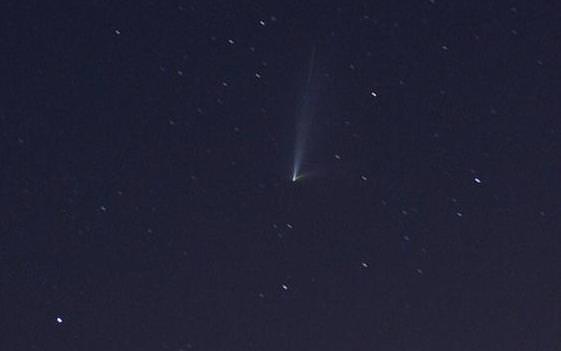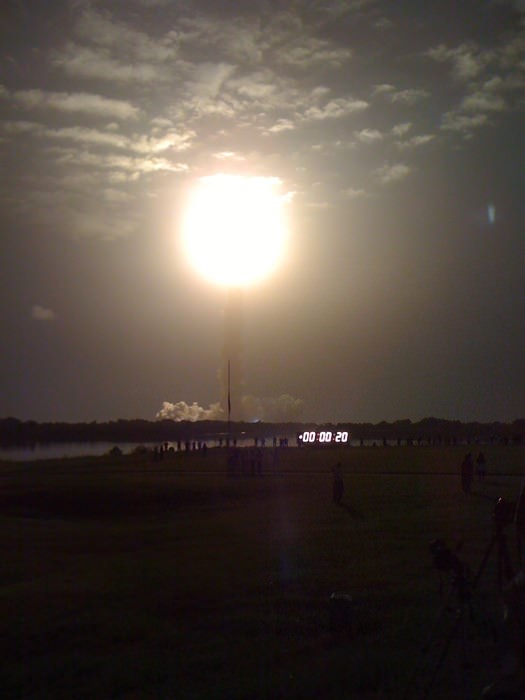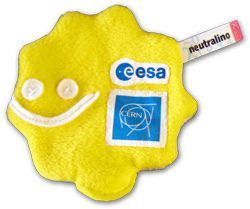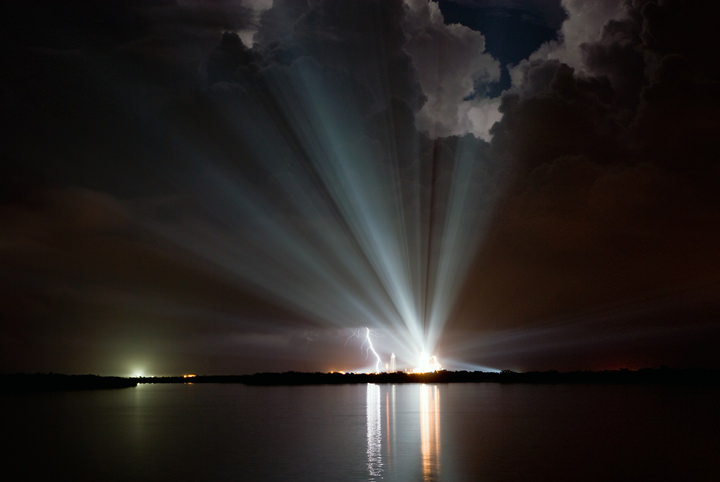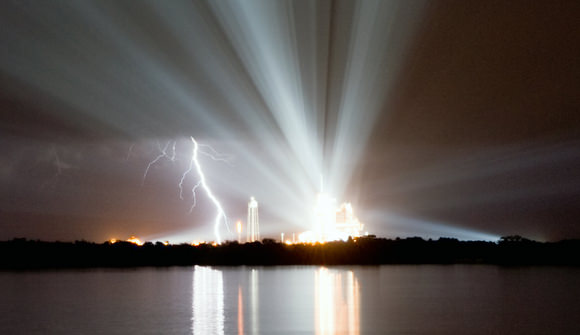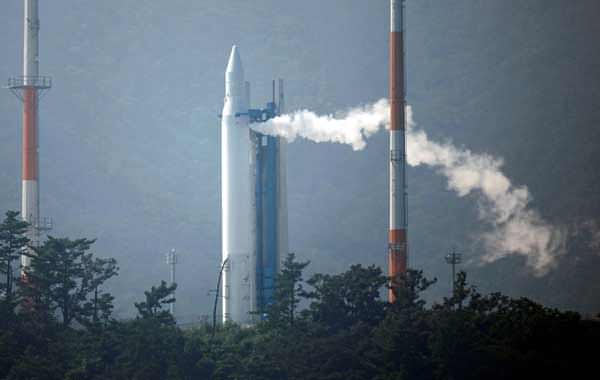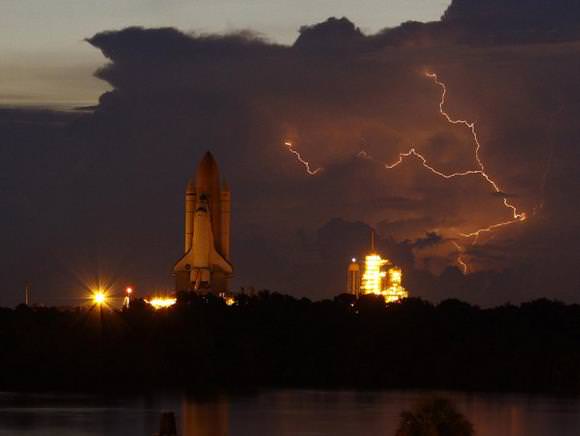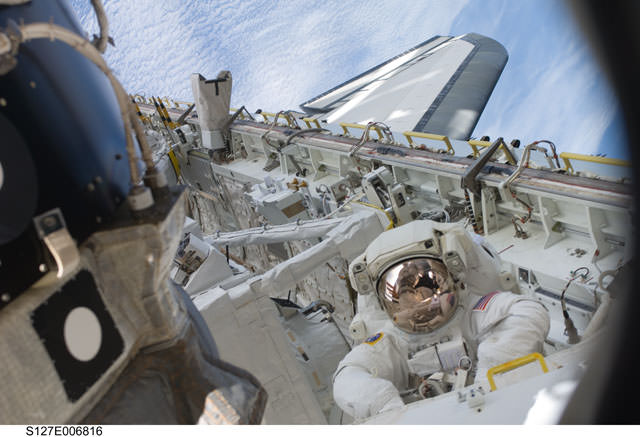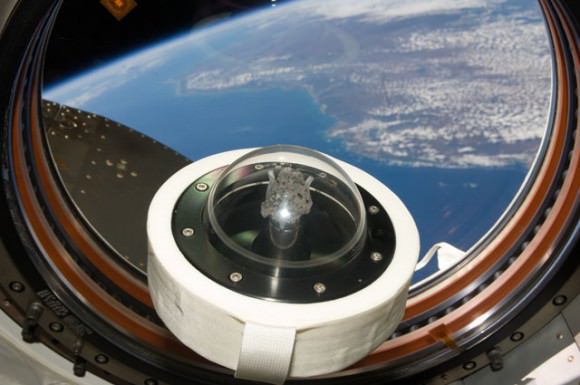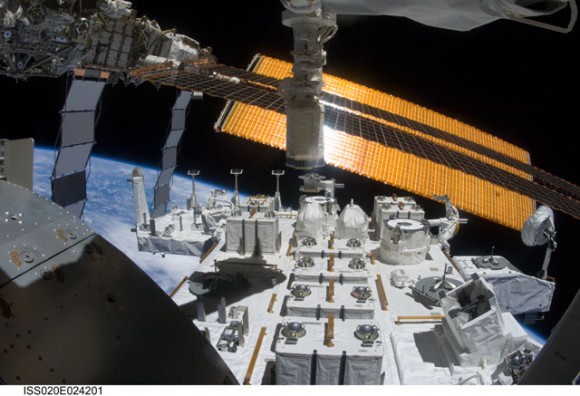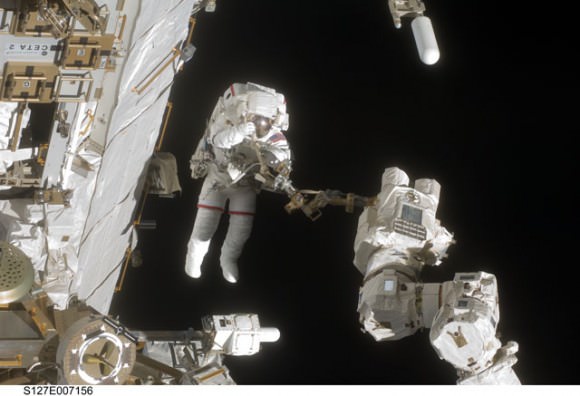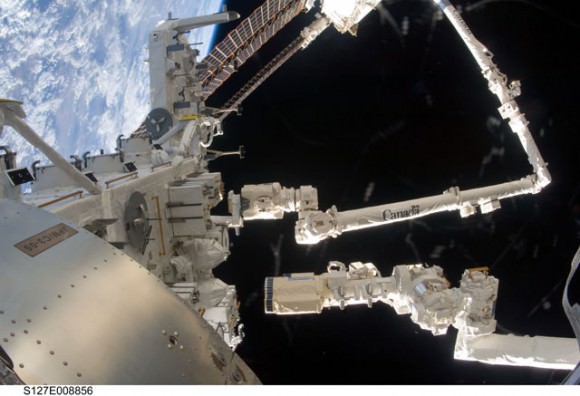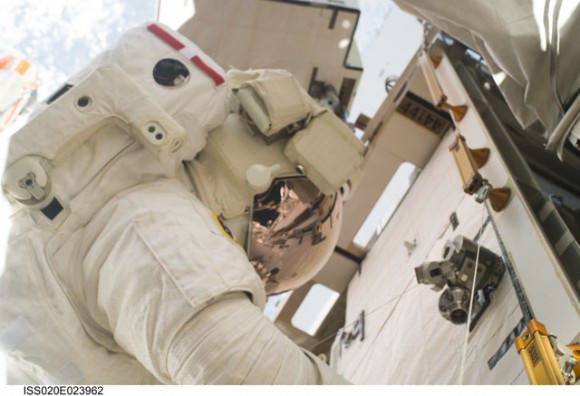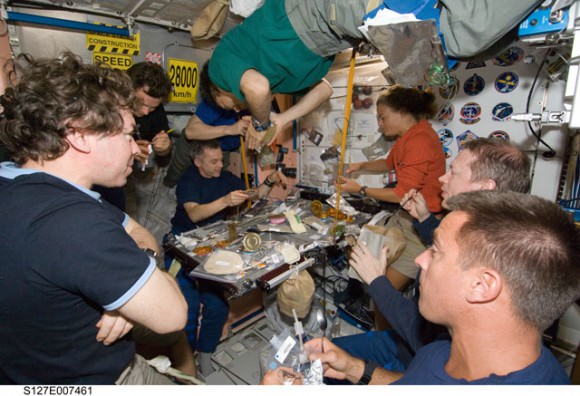[/caption]
This picture is from last week; September 9, 2009 to be exact, but I still wanted to share it. I just got in touch with photographer Clair Perry from Prince Edward Island, Canada to get his permission to post the image. No, this is not a comet. Pictured is space shuttle Discovery executing a water dump. The shuttle needed to get rid of excess waste water before landing the next day, and jettisoned it overboard via the waste water dump line, creating a spectacular visual effect as sunlight hit the spraying water. This dump occurred just as the shuttle was flying over North America last week, and lots of people witnessed this “toilet flush.” Some reports indicated it was “pristine” water (the shuttle fuel cells’ by-product is water) and other reports said it was “waste water and urine” (the Bad Astronomer called it Constellation Urion). Whatever, it was pretty. NASA said this was an unusually large dump, about 150 pounds (68 kg), because new regulations say no shuttle water dumps can take place while docked to the ISS, so as not to contaminate the outdoor experiments on the Kibo lab.
See below for the spectacular entire image, which also includes the nearby ISS creating a streak in the sky. Thanks to Clair Perry for sharing his images.
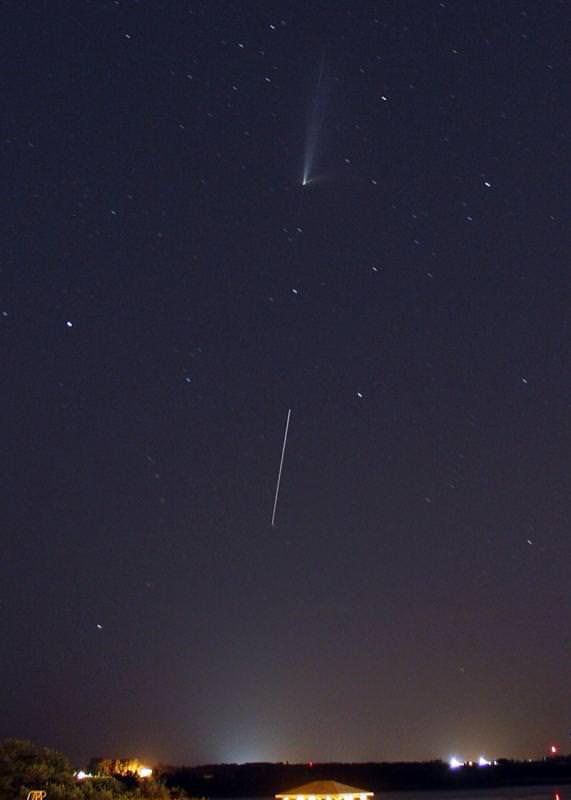
And if you’re worried about the water ice freezing and becoming projectiles in orbit, NASA says that while waste water usually freezes upon jettison into a cloud of tiny ice droplets, when the sun hits, the ice sublimates directly into water vapor and disperses in space.
I remember the first time I saw a shuttle water dump. It was back in 2000, and I had gotten up early, about 4:45 am, to watch the shuttle pass over. But I saw this strange sight, like something was coming off of the shuttle. I ran inside and turned on NASA TV, just in time to see a view of a golden spray shooting out of the shuttle — the sunlight hitting the water at just the right angle made it look like a shimmering gold spray. Gold, not yellow.

